For aficionados of steak, the world is a tantalizing playground of flavors and textures. But within this vast array of options lie some cuts that, while undeniably delicious, may carry health implications worth examining. In this exploration, we delve into the realm of steak to unearth the eight cuts that stand out for their indulgent qualities and the potential health risks they pose.
Whether it’s the rich marbling of a ribeye or the succulent tenderness of a filet mignon, each cut has its allure, but it’s crucial to understand the balance between flavor and health. Let’s embark on this journey to discover the nuances of these cuts and gain insight into making informed choices when it comes to enjoying our beloved steaks.
Table of Contents
ToggleNoxious Cuts Of Steak
Ribeye
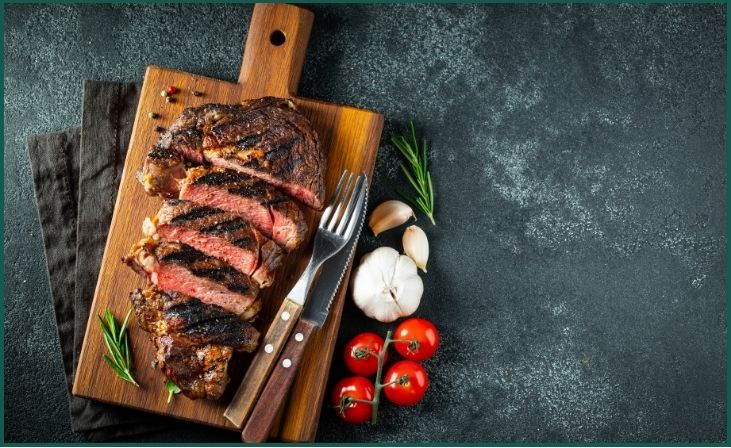
Ribeye steak is revered worldwide for its abundant marbling, which contributes to its exceptional flavor and tenderness. However, this marbling also signifies a high-fat content, which can lead to health concerns such as elevated cholesterol levels and increased risk of heart disease. While indulging in ribeye occasionally can be a pleasurable culinary experience, it’s essential to be mindful of portion sizes and to balance it with other nutritious foods in your diet.
By enjoying ribeye steak in moderation and incorporating plenty of fruits, vegetables, and lean proteins into your meals, you can savor its rich taste while promoting overall health and well-being.
Read Also: 8 Low-Sodium Dinners for High Blood Pressure
New York Strip
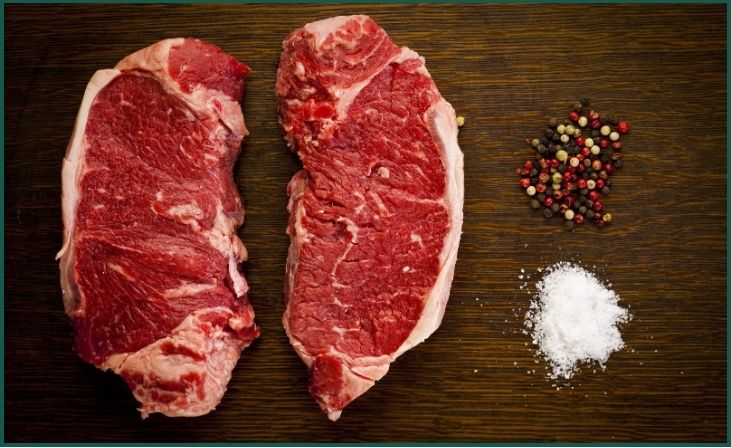
The New York Strip steak is renowned for its succulence and robust flavor profile, attributed in part to its generous fat cap. While this marbling enhances the steak’s taste and tenderness, it also raises potential health concerns due to its high-fat content. Consuming New York Strip steak in moderation can be a gratifying dining experience, but it’s important to be mindful of its impact on overall health, particularly concerning cholesterol levels and cardiovascular health.
Opting for leaner cuts or trimming excess fat before cooking can mitigate some of these concerns while still allowing you to enjoy the indulgent flavors of this classic steak. Balancing indulgence with moderation and incorporating a variety of nutrient-rich foods into your diet can help maintain a healthy lifestyle without sacrificing culinary enjoyment.
Porterhouse
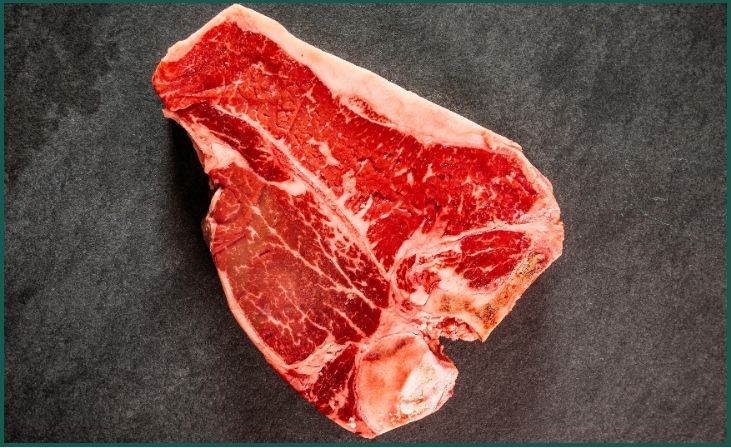
The Porterhouse steak is a true delight for meat enthusiasts, offering the best of both worlds with its combination of tenderloin and top loin cuts. Distinguished from the T-bone steak by its larger portion of tenderloin, the Porterhouse boasts a generous serving size and robust flavor profile. However, its allure is accompanied by potential drawbacks, including its high-fat content and calorie density.
While indulging in a Porterhouse steak can be a satisfying culinary experience, it’s essential to enjoy it in moderation and balance it with nutrient-rich accompaniments to maintain a well-rounded diet. With proper portion control and mindful dietary choices, you can savor the indulgent flavors of a Porterhouse steak while still prioritizing your overall health and well-being.
Prime Rib
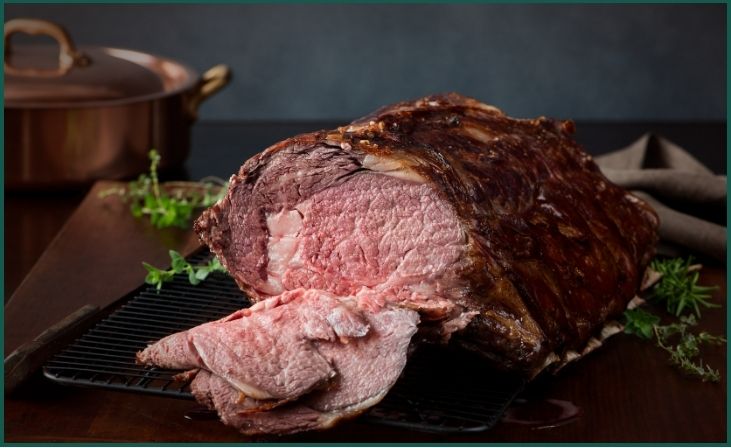
Encounter the prime rib, a centerpiece at buffets renowned for its aromatic allure. Its generous marbling and thick layer of fat contribute to its irresistible flavor and succulence, making it a favorite among meat lovers. However, these indulgent qualities also raise health considerations, particularly regarding cholesterol levels and heart health.
While enjoying prime rib in moderation can be a delightful treat, it’s essential to be mindful of its high-fat content and calorific density. Pairing it with lighter side dishes rich in vegetables and whole grains can help balance out the meal and mitigate potential health risks. With thoughtful dietary choices, you can savor the indulgent flavors of prime rib while still prioritizing your overall well-being.
Don't just scroll, subscribe!
BuzzTrail's unique web-stories are the cure for boredom you've been waiting for.
Brisket

Once relegated to humble status, beef brisket has experienced a culinary renaissance, elevating its profile to that of a celebrated delicacy. This flavorful cut has become a staple at celebratory feasts and barbecues, captivating diners with its tender texture and rich taste. However, along with its newfound popularity come health considerations that merit exploration. Despite its delectable flavor and succulent qualities, beef brisket is known for its high-fat content, which can contribute to cholesterol levels and heart health issues if consumed excessively.
Therefore, while indulging in this beloved cut, it’s essential to do so in moderation and balance it with nutrient-rich accompaniments like vegetables and whole grains. By making mindful dietary choices, you can continue to enjoy the irresistible allure of beef brisket while prioritizing your overall well-being.
Short Ribs

Short ribs, originating from the chuck, might seem unlikely contenders for tenderness given their active muscle source. However, they defy expectations with their high marbling, resulting in a succulent and flavorful eating experience. This marbling contributes to their juiciness and makes them a favorite among meat aficionados. Despite their delectable taste and tender texture, short ribs come with potential health considerations.
The significant fat content in short ribs can pose risks to cardiovascular health if consumed excessively. Therefore, while indulging in these mouthwatering cuts, it’s essential to do so in moderation and balance them with leaner protein sources and plenty of vegetables. With mindful dietary choices, you can savor the irresistible allure of short ribs while prioritizing your overall well-being.
Filet Mignon

Embark on a journey into the realm of filet mignon, revered for its exceptional tenderness that captivates palates worldwide. While its tenderness is undeniably enticing, it’s essential to consider potential health implications. Filet mignon’s tenderness often arises from its low fat content and minimal marbling, which may lead to oversight of its high-fat content. Regular consumption without awareness of its fat content can elevate cholesterol levels and pose a risk to heart health.
Therefore, while savoring this delectable steak, moderation is key. Balancing it with leaner protein sources and nutrient-rich vegetables ensures a well-rounded diet that supports overall health. By making informed dietary decisions, you can indulge in filet mignon’s exquisite tenderness while prioritizing long-term well-being.
Chuck Eye
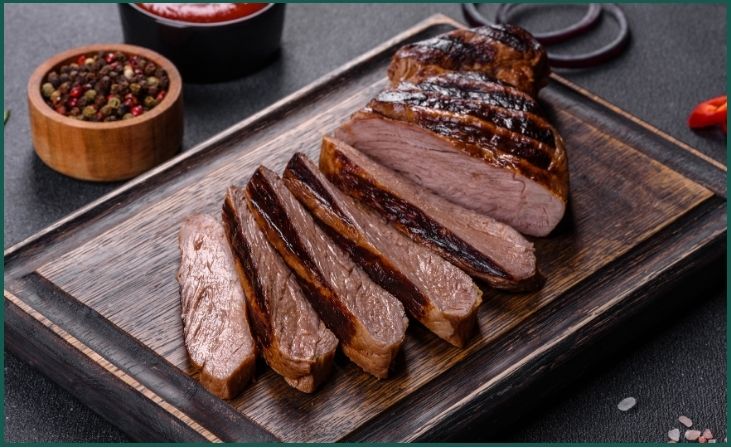
Positioned as a budget-friendly substitute for ribeye, the chuck eye steak offers a compelling option for steak enthusiasts. Situated adjacent to the ribeye region, it inherits some of the flavors and tenderness associated with its pricier counterpart. However, while the chuck eye boasts favorable attributes, such as tenderness and rich flavor, it may lack the extensive marbling and premium quality of the ribeye. Additionally, its affordability can be an attractive feature for budget-conscious consumers.
Yet, it’s crucial to acknowledge that the chuck eye’s leaner composition may result in slightly less succulence compared to the ribeye. Ultimately, exploring the chuck eye steak entails weighing its affordability against potential differences in taste and texture, allowing consumers to make informed decisions based on their preferences and budget constraints.
Bottom line
Exploring the realm of steak cuts unveils a diverse landscape of flavors, textures, and culinary experiences. However, amid the tantalizing allure of succulent meats, it’s essential to consider the health implications associated with certain cuts. The eight cuts highlighted in this exploration offer a spectrum of indulgent qualities, from rich marbling to exceptional tenderness.
While these attributes contribute to their gastronomic appeal, they also raise concerns about their potential impact on health, particularly in terms of cholesterol levels and cardiovascular health. As consumers navigate their steak selections, it’s crucial to strike a balance between flavor preferences and health considerations, opting for leaner cuts or moderation when indulging in richer varieties.
FAQs
Why are some steak cuts considered unhealthy?
Why are some steak cuts considered unhealthy?
Certain steak cuts contain high levels of saturated fat and cholesterol, which can contribute to cardiovascular issues when consumed in excess.
Are there any health benefits to eating steak?
Are there any health benefits to eating steak?
Steak is a good source of protein, iron, and various essential nutrients. However, the health benefits depend on factors such as the cut of meat and portion size.

